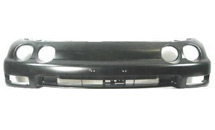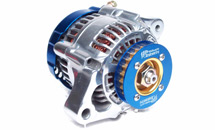The suspension of any modern car consists of elastic elements which absorb road unevenness. A cross-arm then redistributes the received forces and shifts the wheels. This whole system of arms and beams is referred to as the vehicle’s anti-roll bar.
The purpose of the anti-roll bar is to keep the vehicle stable when external forces change, e.g. when cornering. The lateral forces resulting from this manoeuvre can tip the vehicle over if the body rolls over significantly. Due to its design feature, the anti-roll bar equalises the lateral force exerted on the outer and inner wheels in relation to the steering angle. Depending on the drive type, the stabiliser can be designed as a single bent beam or as an arm system.
As a rule, a single curved element is characteristic of a dependent vehicle suspension, while a wishbone system is characteristic of an independent vehicle suspension. In order to avoid noise caused by the movement of the stabiliser components and to absorb vibration, the stabiliser is attached to the body by means of elastic elements – bushings.
A stabiliser bushing absorbs vibration from suspension components, thereby providing a smoother ride and reducing noise.
The bushing is an elastic component made from moulded rubber. The shape of the bushing may vary depending on the design of the individual vehicle, but the overall shape is similar. To enhance durability and reliability, on some models the bushing is reinforced with gussets and grooves. Most bushings are visually exposed to wear, cracking and abrasion, and can become stiff and inelastic.
When is it time to replace the stabiliser bushes?
If the stabiliser bushes are faulty, the following symptoms can be seen:
- Steering wheel play when turning;
- Bouncing of the steering wheel;
- A clicking noise that occurs when the car’s body rolls;
- The car is “wobbling” when driving;
- The vehicle is drifting to one side;
- Vibration in the suspension components;
- If the vehicle is continually driven with the steering wheel in neutral, the brake pedal does not turn.
If you notice any of these signs, we recommend that you schedule an appointment for diagnosis and repair of the vehicle’s suspension.
If there is a problem with the anti-roll bar bushings, the following steps are recommended
- Washing the car;
- Lifting the car on a lift;
- removal of the car’s wheels;
- Removing the underbody liner or other plastic protection;
- Removing fasteners from the stabiliser components;
- Removing the attachment from the stabiliser bushing bracket;
- Replace the bushing with a new one.
On some vehicle models to facilitate bushing replacement, it is necessary to remove the engine crankcase protection. Reassembly is carried out in reverse order. The bushing is split for ease of assembly of this elastic element.
Stabiliser bushes should be replaced after 30 thousand kilometres or when the above-mentioned signs of malfunction are observed. To prevent the vehicle from “yawing” when driving, both stabiliser bushes should be replaced regardless of wear. In order to extend the service life of the anti-roll bar bushings, they should be cleaned of dirt at every maintenance session, as dirt particles in the bushing/stabiliser linkage interface are a source of additional wear and tear.


